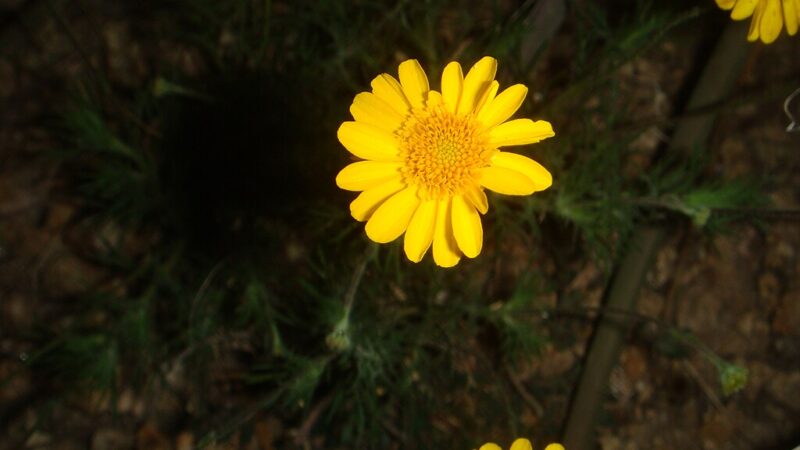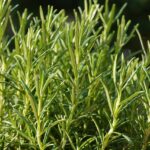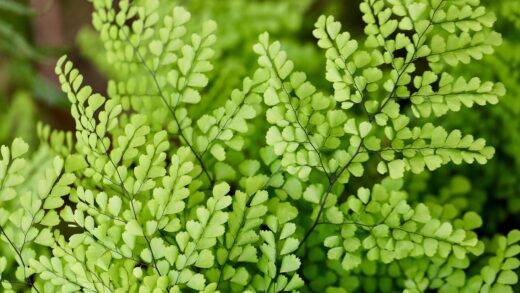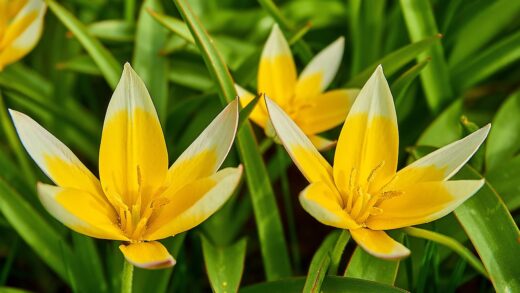Diseases and pests of the Dahlberg daisy

While the Dahlberg daisy is celebrated for its resilience and generally trouble-free nature, it is not entirely immune to the challenges posed by pests and diseases. A proactive approach, centered on providing the plant with its ideal growing conditions, is the most effective strategy for prevention. Most of the common issues that affect this plant are directly linked to environmental stress, particularly excessive moisture and poor air circulation. By ensuring the plant is sited in a sunny location with excellent drainage and by practicing proper watering techniques, gardeners can significantly reduce the likelihood of encountering problems. Vigilance and early intervention are key to managing any issues that do arise, ensuring they do not escalate into serious threats to the plant’s health.
The most significant threat to the Dahlberg daisy is not an insect or a pathogen, but rather the well-intentioned gardener who provides too much water. This plant’s deep-seated intolerance for “wet feet” makes it highly susceptible to a range of fungal diseases, most notably root rot. When the soil remains saturated for extended periods, it deprives the roots of oxygen and creates the perfect breeding ground for water-loving fungi. The resulting decay of the root system cripples the plant’s ability to absorb water and nutrients, leading to a swift decline that is often irreversible.
On the pest front, the Dahlberg daisy is most commonly troubled by sap-sucking insects such as aphids and spider mites. These pests thrive on the tender new growth of plants, using their piercing mouthparts to extract vital fluids. While a small population may not cause significant harm, a large infestation can weaken the plant, cause distorted growth, and reduce its flowering capacity. These pests are often more prevalent on plants that are already under stress from other factors, such as improper watering or insufficient sunlight.
Fortunately, managing these common pests and diseases is well within the reach of the home gardener. Integrated Pest Management (IPM) strategies, which prioritize cultural controls and biological solutions over chemical interventions, are particularly effective. This involves creating a garden environment that is less hospitable to pests and diseases from the outset. Simple practices like spacing plants appropriately for good air flow, watering at the base of the plant, and keeping the garden free of weeds and debris can make a world of difference in preventing problems before they start.
Preventing fungal diseases
Fungal diseases are the most common affliction of the Dahlberg daisy, and almost all of them are preventable through proper cultural practices. The cornerstone of prevention is ensuring impeccable drainage. This cannot be overstated; the plant’s roots must never be allowed to sit in stagnant water. When planting in the ground, amend heavy clay soils with organic matter like compost, as well as inorganic materials like coarse sand or perlite to improve soil structure and porosity. For container planting, use a high-quality potting mix formulated for cacti and succulents, and always choose pots with multiple large drainage holes.
More articles on this topic
Proper watering technique is the second pillar of fungal disease prevention. Always water the Dahlberg daisy at the soil level, avoiding overhead sprinklers that wet the foliage. Damp leaves, especially in humid weather or when temperatures are cool at night, create an ideal environment for fungal spores to germinate and infect the plant. Watering in the early morning allows any accidental splashes on the foliage to dry quickly in the sun. It is also crucial to allow the soil to dry out completely between waterings, as consistently moist soil is the primary invitation for root rot pathogens.
Good air circulation is another critical factor in keeping fungal diseases at bay. When planting Dahlberg daisies, be sure to space them according to their mature size, typically about six to eight inches apart. This ensures that air can move freely around each plant, which helps to keep the foliage dry and reduces humidity at the plant’s base. Avoid planting them in crowded conditions where they are packed tightly against other plants. Periodically thinning out any overly dense growth can also improve air movement within the plant itself.
A final preventative measure is good garden hygiene. Fungal spores can overwinter in dead plant debris, so it is important to clean up fallen leaves and remove any dead or diseased plant material promptly. If a plant does show signs of a fungal infection like leaf spot or powdery mildew, prune off the affected parts immediately to prevent the disease from spreading. By combining these practices—excellent drainage, proper watering, good air circulation, and sanitation—you create a growing environment where fungal diseases will find it very difficult to gain a foothold.
Dealing with root rot
Root rot is the most serious and often fatal disease that can affect the Dahlberg daisy. It is not caused by a single pathogen but rather by a complex of soil-borne fungi, such as Pythium, Phytophthora, and Rhizoctonia, that thrive in anaerobic (oxygen-deprived) conditions created by waterlogged soil. The disease begins by attacking the fine feeder roots, causing them to turn brown, soft, and mushy. As the infection progresses, it moves up into the main root system and eventually to the crown of the plant.
More articles on this topic
The above-ground symptoms of root rot can be deceptive and are often mistaken for under-watering. The plant may appear wilted, its leaves may turn yellow and drop, and its growth will be stunted. The key difference is that a plant with root rot will be wilting even when the soil is wet. This is because the decaying root system is no longer capable of absorbing and transporting water to the rest of the plant. If root rot is suspected, the best way to confirm it is to gently remove the plant from the soil and inspect the roots. Healthy roots should be firm and white, while rotted roots will be dark, soft, and may easily pull away from the plant.
Unfortunately, once a plant is severely affected by root rot, it is very difficult to save. Prevention is truly the only effective cure. If the disease is caught in its very early stages, it may be possible to salvage the plant by removing it from the soil, carefully trimming away all of the dark, rotted root portions with a sterile tool, and repotting it in fresh, dry, sterile potting mix. After repotting, water it very sparingly until it shows signs of new growth.
To avoid root rot from the start, follow all the preventative measures for fungal diseases. Pay meticulous attention to soil drainage. Never let the plant’s pot sit in a saucer of water. When planting in beds, consider creating raised mounds of soil to plant on top of, which naturally improves drainage away from the plant’s crown. Always err on the side of under-watering rather than over-watering. Allowing the soil to become completely dry to the touch between waterings is the single most important action you can take to protect your Dahlberg daisy from this devastating disease.
Managing sap-sucking pests
Aphids are one of the most common insect pests found on Dahlberg daisies. These small, pear-shaped insects come in various colors, including green, black, and yellow, and typically cluster on the tender new growth, stems, and undersides of leaves. They feed by piercing the plant tissue and sucking out the sap, which can lead to distorted or stunted growth, yellowing leaves, and a general decline in plant vigor. As they feed, aphids also excrete a sticky substance called honeydew, which can attract ants and promote the growth of sooty mold.
Managing aphids often begins with the simplest and least toxic methods. For a light infestation, a strong jet of water from a garden hose can be surprisingly effective at dislodging the pests from the plant. This should be done in the morning to allow the foliage to dry. Encouraging natural predators in the garden is another excellent long-term strategy. Ladybugs, lacewings, and hoverflies are all voracious predators of aphids. Planting a diversity of flowering plants can help to attract and sustain these beneficial insects.
For more persistent aphid problems, insecticidal soap or horticultural oils like neem oil are effective contact insecticides with low toxicity to beneficial insects and pollinators. These products work by suffocating the soft-bodied aphids. It is essential to achieve thorough coverage, paying special attention to the undersides of leaves where aphids tend to congregate. Multiple applications may be necessary, typically spaced about a week apart, to control newly hatched nymphs. Always read and follow the label instructions carefully.
Spider mites are another potential pest, especially during hot, dry weather. These tiny arachnids are difficult to see, but their damage is more apparent, causing a fine, yellow stippling on the leaves. In heavy infestations, you may also see delicate webbing on the plant. Spider mites thrive in low-humidity conditions, so increasing the humidity around the plant by regularly hosing it down can help to deter them. Like aphids, they can also be controlled with applications of insecticidal soap or neem oil, ensuring complete coverage of all plant surfaces.
Other potential issues
While less common, the Dahlberg daisy may occasionally suffer from foliar diseases like powdery mildew or leaf spot, particularly in very humid climates or during prolonged periods of rainy weather. Powdery mildew appears as a distinctive white, talcum-powder-like coating on the surfaces of leaves and stems. Leaf spot diseases manifest as discrete brown or black spots on the foliage. Both of these fungal issues are exacerbated by poor air circulation and wet leaves.
The primary defense against these foliar diseases is prevention. Ensure plants are spaced adequately to allow for good air movement. Water at the base of the plant to keep the leaves as dry as possible. If an infection does occur, promptly remove and destroy the affected leaves to prevent the spores from spreading to healthy parts of the plant. For severe or persistent infections, a fungicide containing sulfur or potassium bicarbonate can be effective, but these should be used as a last resort.
Snails and slugs can also be a nuisance, especially for young seedlings. These mollusks are active at night and chew irregular holes in the leaves. Their presence is often confirmed by the silvery slime trails they leave behind. To manage them, you can hand-pick them off the plants after dark or set up beer traps (shallow containers of beer sunk into the soil) which they are attracted to and will drown in. Spreading diatomaceous earth or crushed eggshells around the base of the plants can create a sharp barrier that deters them.
Finally, it is important to consider abiotic stressors, which are non-living environmental factors that can harm the plant. Insufficient sunlight is a major issue for Dahlberg daisies, leading to weak, leggy growth and a significant reduction in flowering. This is not a disease, but a cultural problem that can only be rectified by moving the plant to a sunnier location. Similarly, nutrient deficiencies, while rare, can cause symptoms like pale leaves. However, it is crucial to first rule out over-watering as the cause of yellowing leaves before ever considering adding fertilizer.
Creating a healthy environment
The most effective and sustainable approach to managing pests and diseases is to focus on creating a healthy, resilient plant from the outset. A strong, vigorous Dahlberg daisy growing in its preferred conditions is naturally more resistant to attack than a plant that is stressed by an unsuitable environment. This begins with selecting the right location—one that provides at least six to eight hours of direct sun each day. Strong sunlight not only fuels prolific flowering but also helps to keep foliage dry and less susceptible to fungal pathogens.
Building healthy soil is another cornerstone of a resilient garden. For the Dahlberg daisy, this means creating a soil structure that is loose and exceptionally well-draining. While it does not require rich soil, a small amount of compost can improve the overall health of the soil ecosystem, encouraging beneficial microbes that can help to suppress disease-causing organisms. The focus, however, should always be on drainage, amending as needed with sand or grit to ensure water never stands around the plant’s roots.
Embracing biodiversity within the garden is a powerful tool for pest management. By planting a wide variety of species, you can create a more balanced ecosystem that supports a population of beneficial insects. These “good bugs,” such as ladybugs, lacewings, and predatory wasps, are natural enemies of common pests like aphids and will help to keep their populations in check without the need for chemical sprays. Flowers like alyssum, dill, and cosmos are excellent for attracting these garden allies.
Regular observation is a simple yet critical practice. Take time to walk through the garden and inspect your plants closely. By familiarizing yourself with what a healthy Dahlberg daisy looks like, you will be able to spot the early signs of trouble, whether it’s the first few aphids or the initial yellowing of a lower leaf. Catching problems early makes them much easier to manage. This attentive, holistic approach, focused on prevention and creating a healthy environment, is the key to enjoying a season of beautiful, trouble-free Dahlberg daisies.
📷Miwasatoshi, CC BY-SA 4.0, via Wikimedia Commons


















